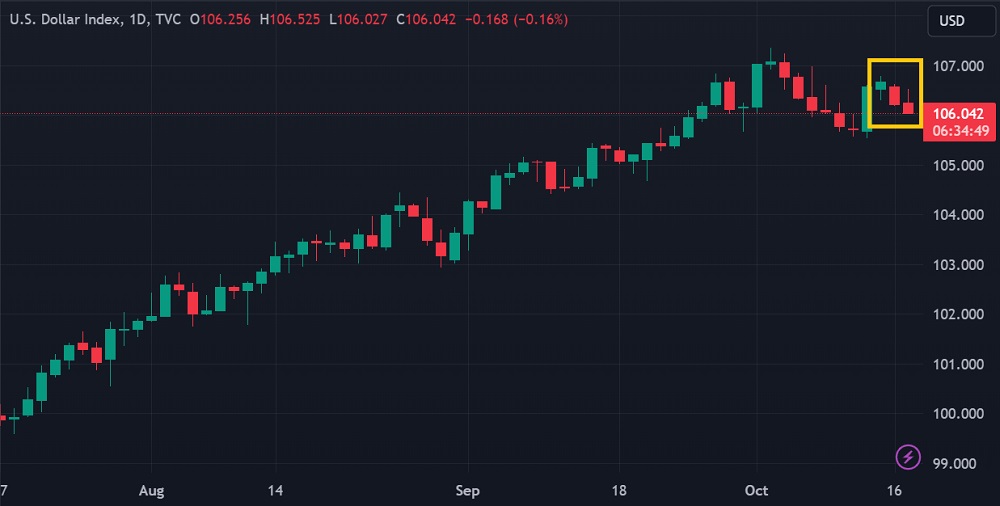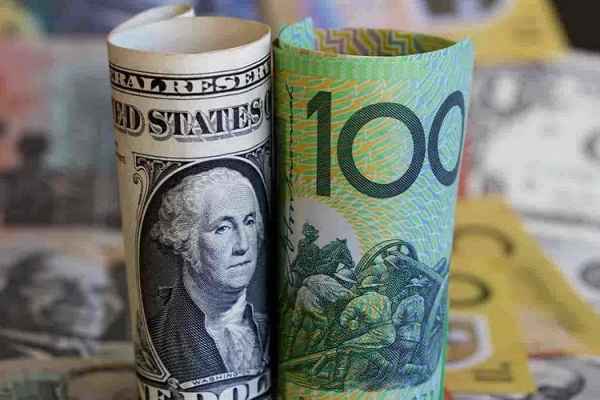There aren't enough catalysts to increase the dollar. In the end, the US Dollar Index falls to 106.00.
The US dollar exchange rate continued to weaken during the mid-New York session on Tuesday, October 17th. Despite retail sales data surpassing expectations, the market lacked catalysts to drive higher greenback. The US Dollar Index (DXY) declined to 106.00 as of the time of writing.

US retail sales data recorded a 0.7% increase in September 2023, significantly higher than the consensus estimate of only 0.3%. Data for August was also revised upward from 0.6% to 0.8%.
Core retail sales data showed a 0.6% growth in September 2023. This figure is weaker than the 0.9% increase in August but far exceeds the consensus estimate for September, which was only 0.2%.
Both indicate that the US economy remains robust, in line with other reports. However, this data is not significant enough to boost the prospects of the next Fed interest rate hike.
Fed Funds Futures now imply a 43% chance of another Fed interest rate hike this year, only a slight increase from 31% earlier in the week. The likelihood of a rate hike at the November FOMC meeting remains low, at around 12%.
Market participants are focusing on the schedule of speeches by several key figures from The Fed, including Chairman Jerome Powell, on Thursday. Their statements can potentially be more significant market movers for the US dollar.
Data from countries rivaling the greenback more influence today's currency pairs. USD/JPY continues to fluctuate below the 150.00 threshold as market participants remain vigilant about the possibility of Japanese intervention.
GBP/USD is trapped in a very narrow range due to the delay in releasing most UK labor market data. NZD/USD has declined due to weakening New Zealand inflation data, reaching its lowest level in the past two years. Meanwhile, EUR/USD has shown strength thanks to unexpectedly positive German ZEW data.

 Dedicated FREE FOREX VPS
Dedicated FREE FOREX VPS Free FOREX Virtual Private Server
Free FOREX Virtual Private Server MT4 Demo Contest, Get $500
MT4 Demo Contest, Get $500 Sign Up for an Account, Claim 60% Deposit Bonus
Sign Up for an Account, Claim 60% Deposit Bonus Free MT4/MT5 VPS 2024
Free MT4/MT5 VPS 2024 Send E-mail and Get Free Merchandise
Send E-mail and Get Free Merchandise $1K Refer a Friend Bonus for Pepperstone Pro clients
$1K Refer a Friend Bonus for Pepperstone Pro clients Maximize Your Earnings with 100% Deposit bonus
Maximize Your Earnings with 100% Deposit bonus Trade to Win, $5,000 Monthly Demo Contest
Trade to Win, $5,000 Monthly Demo Contest Claim 30% + 15% Deposit Bonus from LiteFinance
Claim 30% + 15% Deposit Bonus from LiteFinance






